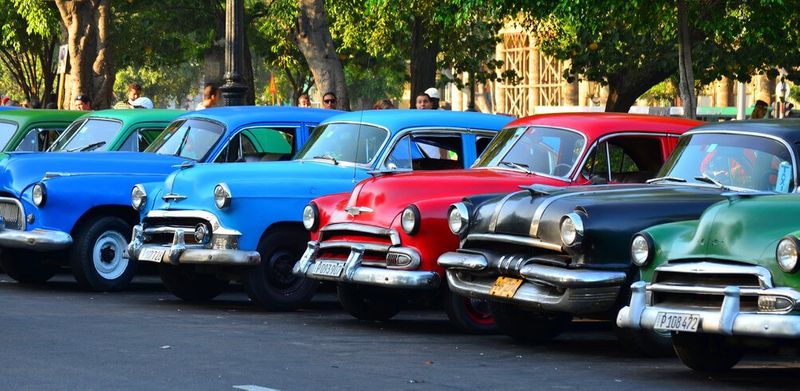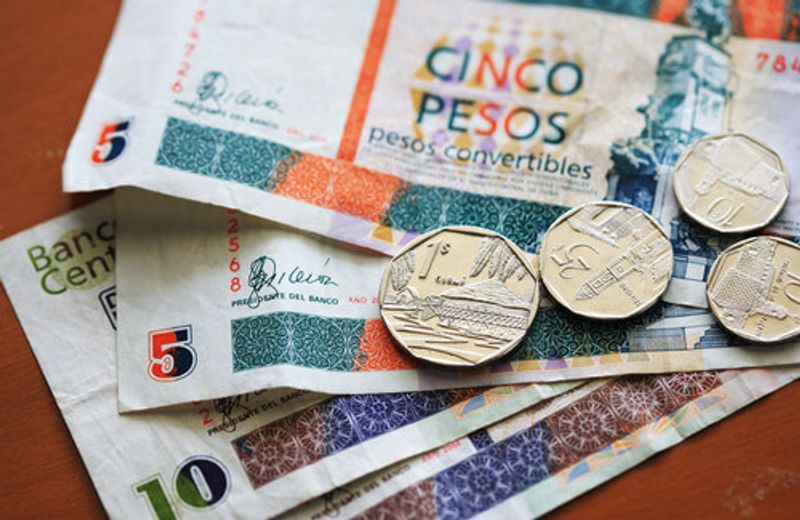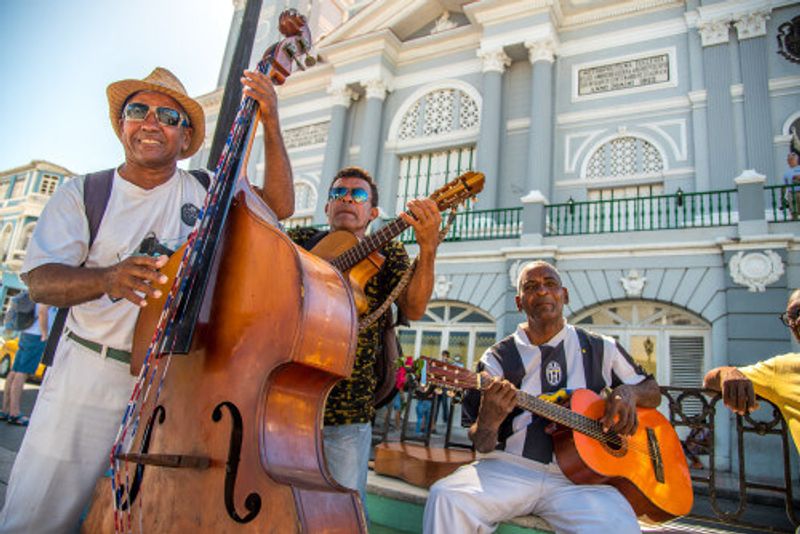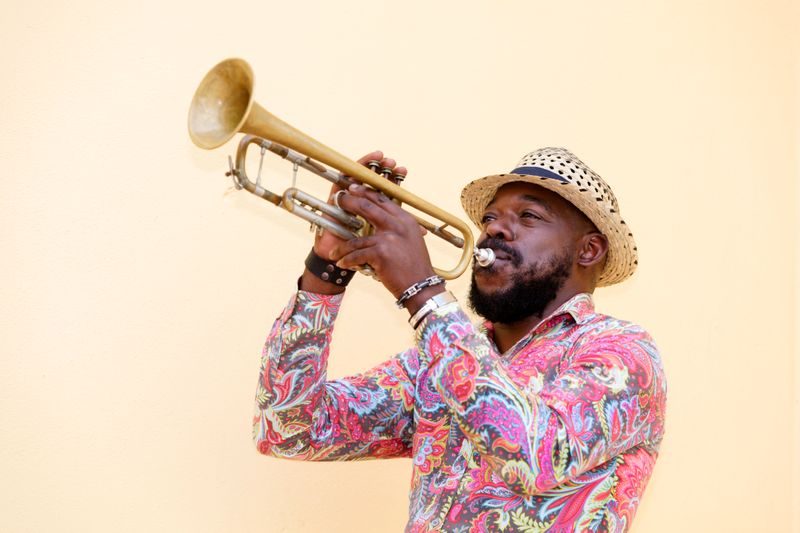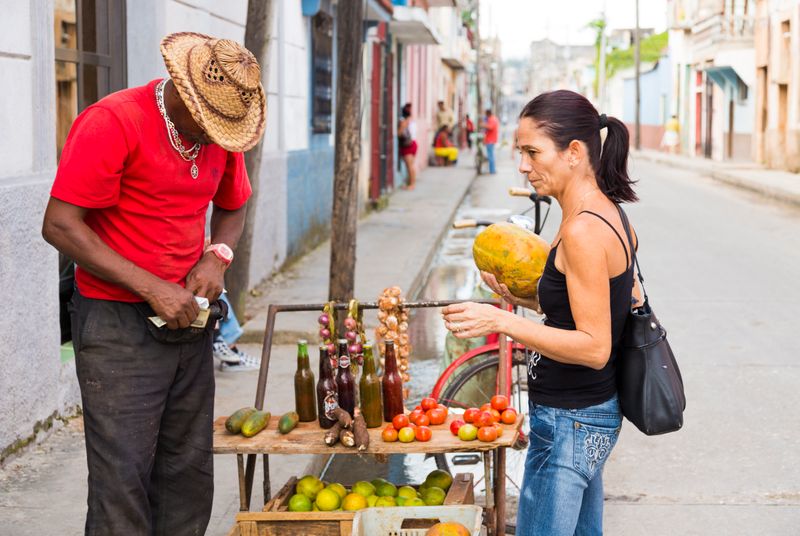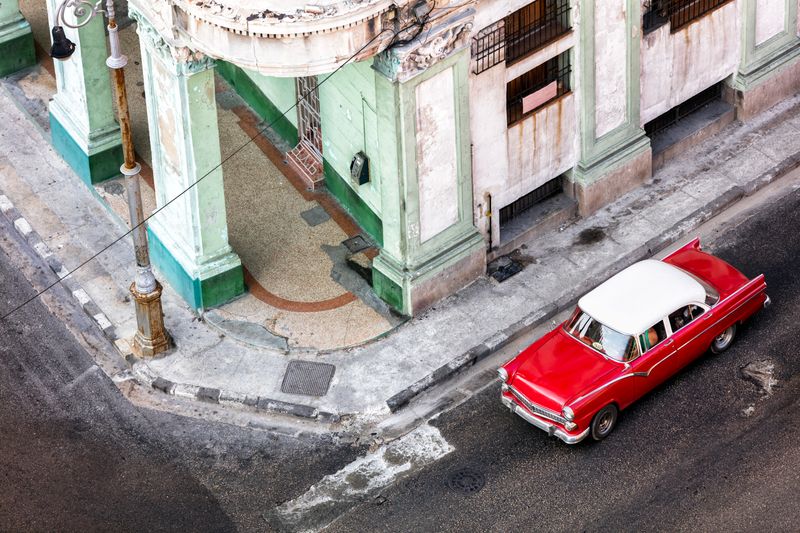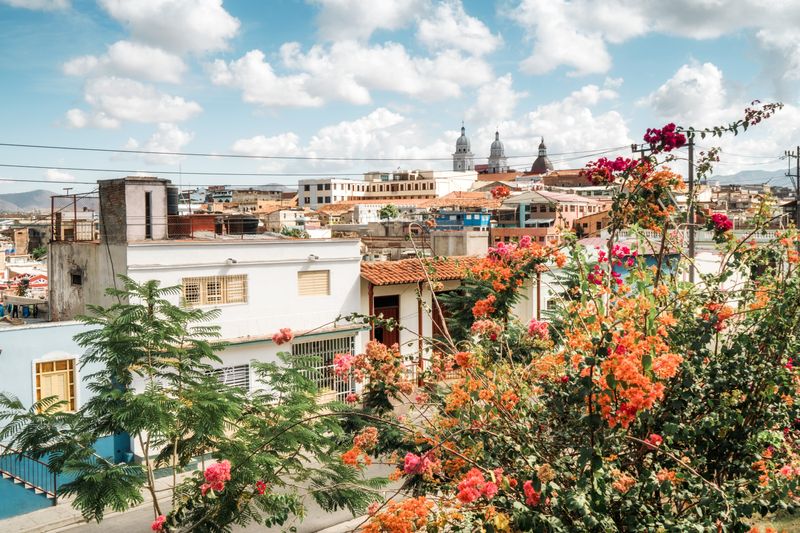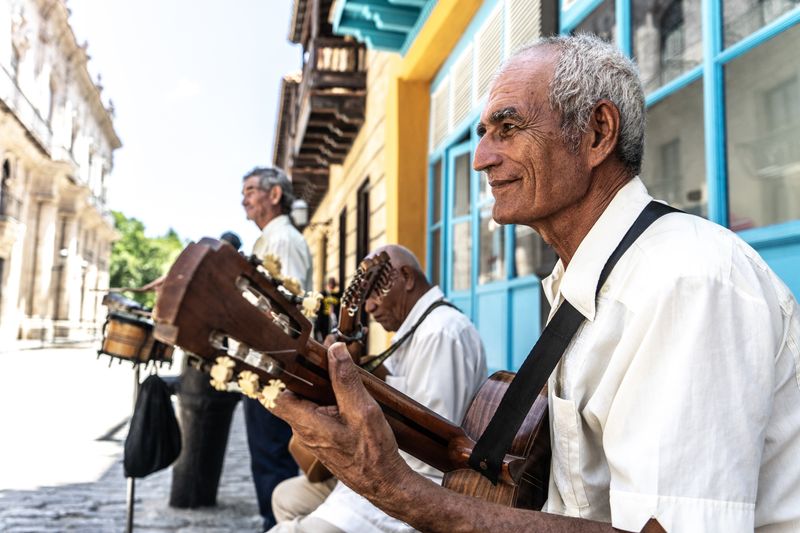Cuba has long intrigued travellers with its colourful streets, classic cars, and rich history. Tucked in the Caribbean, this island nation offers a unique blend of culture, resilience, and rhythm that's unlike anywhere else. If you're planning your first Cuba travel experience, here's what you need to know to get started.
For years, Cuba was mostly explored by adventurous travellers willing to step off the beaten path. Its colonial cities, vintage vehicles, and vibrant locals made it feel a world away. But more people are now visiting to experience Cuban culture firsthand—from the sound of salsa echoing through Havana to the untouched beaches of the Caribbean coast.
Let’s walk through the essentials to help you make the most of your first trip to Cuba.
Cuban visa requirements
Travellers of most nationalities will need a tourist visa (also known as a tourist card) to enter Cuba. This visa typically allows stays of up to 30 days, with one extension of another 30 days possible while in the country. The process for obtaining a visa varies depending on your country of origin, and can often be arranged through your airline, a Cuban consulate, or a licensed travel agent. Always double-check requirements with the relevant consulate before booking your trip.
Your passport must be valid for at least six months beyond your intended return date. In addition to your visa, you must also provide proof of comprehensive travel insurance that covers medical expenses in Cuba. Some travellers may be asked to show proof of insurance upon arrival, so it's a good idea to carry a physical copy of your policy.
Travellers from the United States face different regulations and must comply with additional government requirements. If you're unsure what applies to your country, check with your national government travel advisory service for the most current information.
Did you know?
Cuba has strict customs rules: visitors are not allowed to bring drones, GPS devices, or satellite phones into the country without prior permission.
Currency exchange in Cuba
Cuba’s monetary system is unique. The official currency is the Cuban Peso (CUP), but U.S. dollars (USD) and Euros are widely accepted, particularly in tourist-facing businesses like restaurants, shops, and private accommodations. We recommend these currency travel tips:
- Exchange small amounts into CUP at local banks or Official Exchange Houses (CADECAs)
- Use foreign cash (preferably Euros or USD) at private venues
- Most Australian-issued bank cards will not work, so do not rely on them
- Carry plenty of small denominations for tipping and casual purchases
- Before you leave, be sure to exchange any leftover CUP, as it cannot be converted outside of Cuba.
Did you know?
In Cuba, you can’t withdraw money using American bank cards due to long-standing sanctions—always plan ahead.
Internet access in Cuba
Internet access in Cuba is government-controlled and limited in both speed and availability. Don’t expect widespread or fast connections.
To get online:
- Purchase a NAUTA internet card (available at hotels and ETECSA centres)
- Connect in designated Wi-Fi hotspots such as plazas or hotel lobbies
- Expect restricted access to some sites and very slow speeds
- Use a VPN to protect your privacy
Did you know?
Some luxury hotels offer better connectivity, but even then, don’t expect streaming or video calls to work reliably.
Language & cultural etiquette in Cuba
Spanish is the national language of Cuba, and while English is spoken in many hotels, resorts, and tourist hubs, especially in Havana and Varadero, don’t expect it to be widely understood elsewhere. Cubans are warm and welcoming, and learning a few basic phrases can help break the ice and lead to meaningful interactions.
Here are a few essentials to get you started:
- “Hola” – Hello
- “Gracias” – Thank you
- “¿Dónde está...?” – Where is...?
- “La cuenta, por favor” – The bill, please
- “¿Cuánto cuesta?” – How much does it cost?
Making an effort to speak Spanish, even a little, shows respect and often earns you friendlier service and more genuine connections.
Tips for cultural etiquette in Cuba:
- Dress modestly when entering churches, museums, or government buildings
- Greet people with a handshake, particularly when introduced formally
- Avoid controversial conversations about politics or the government
- Tipping is expected in most service settings—aim for 10% at restaurants or more for excellent service
- Don't photograph locals without permission—it’s always polite to ask first
Cubans are expressive and sociable, and good manners go a long way. You’ll find that smiling, being respectful, and showing interest in local traditions will open doors (and maybe even invitations to a family meal).
Did you know?
Baseball is Cuba’s most beloved sport. If you catch a game, you’ll find locals more than happy to share their passion with you.
The best time to visit Cuba
Cuba’s tropical climate means it’s warm year-round, but the seasons vary:
- Dry season (November to April): This is the best time to visit Cuba for sunshine, beach days, and city exploration. Expect clear skies, warm temperatures around 27–30°C (80–86°F), and less humidity.
- Wet season (May to October): Days are hotter and more humid, especially from June onward. Showers are usually brief and come in the afternoon, leaving time for plenty of outdoor adventures.
- Hurricane season (June to November): Although hurricanes are relatively rare, the highest risk is from August to October. Keep an eye on weather forecasts if you're travelling during this period.
Popular Cuban festivals
Many travellers choose to visit during cultural festivals, which bring an extra layer of energy and tradition to your itinerary. Here’s a list of major Cuban festivals in calendar order:
- Havana Jazz Festival (January)
- Festival del Habano (February) – A celebration of the famous Cuban cigars, held in Havana
- Havana International Book Fair (February–March) – A major literary event attracting global authors
- Romerías de Mayo (May) – A traditional and contemporary arts festival in Holguín
- Cine Pobre Film Festival (May) – Celebrating independent cinema in Gibara
- Santiago de Cuba Carnival (July) – Cuba’s most famous street carnival, full of music, dance, and vibrant parades
- Havana Carnival (July, August) – Featuring colourful floats and Afro-Cuban rhythms
These celebrations offer a deeper look into Cuban traditions and rhythms, with vibrant parades, live Cuban music, and spirited local crowds.
Did you know?
Cuba is among the sunniest of the Caribbean islands, making it an ideal year-round destination for sunseekers. Despite being Caribbean neighbours, Cuba and nearby islands like the Bahamas can have quite different seasonal patterns—Cuba stays warmer longer.
Must-try Cuban dishes
Cuban cuisine is a flavourful mix of Spanish, African, and Caribbean influences. Popular dishes to try include:
- Ropa Vieja – slow-cooked shredded beef in tomato sauce
- Moros y Cristianos – black beans and white rice
- Tostones – twice-fried green plantains
- Picadillo – minced meat with olives, raisins, and spices
Don’t forget to sample local drinks like:
- Mojitos and Daiquiris
- Fresh sugarcane juice (guarapo)
For more top picks, check out our in-depth guide to the food and drink you need to try in Cuba.
Did you know?
Cuban street vendors often sell snacks like churros and sandwiches from bicycle carts—perfect for a quick, tasty bite.
Classic cars in Cuba and getting around
Cuba is a paradise for car lovers. Classic American cars from the 1950s are still in daily use. But these automotive beauties are not just a novelty—they’re an essential part of local life.
Transport options in Cuba include:
- Private taxis—often restored vintage Chevrolets or Buicks
- Collectivos—shared taxis that follow set routes between cities
- Viazul—reliable and affordable coach service for long-distance travel
- Coco taxis and bici-taxis—fun for short distances within cities
If you're keen to explore independently, bike rentals and walking tours are great ways to soak up the local atmosphere.
Did you know?
Some of the classic cars you see in Havana are older than their drivers, and many are lovingly passed down through generations.
Cuban attractions you can’t miss
Havana
This capital city offers the heart and soul of Cuba. Stroll through Old Havana (Habana Vieja), a UNESCO-listed gem filled with colourful buildings, open-air plazas, and live music on every corner.
Top attractions in Havana include:
- El Capitolio
- Malecón waterfront promenade
- Plaza de la Catedral
- The Museum of the Revolution
Viñales
Famous for its limestone cliffs and lush valleys, Vinales is a peaceful countryside town that’s ideal for hiking, horse riding, or visiting tobacco farms. Famous for its craggy limestone cliffs and emerald-green valleys, Viñales is a tranquil rural hub where time seems to slow down. Spend your days hiking, gliding past tobacco farms that still dry their leaves in thatched bohíos, and ducking into subterranean rivers in Cueva del Indio or Santo Tomás—Cuba’s longest cave system. Evenings bring live trova music to the town square and fiery Caribbean sunsets behind the karst ridges.
Varadero beaches
Unfolding for more than 20 km along the Hicacos Peninsula, Varadero’s beaches are the stuff of postcard perfection. Dozens of all-inclusive resorts sit beside family-run casas and boutique eco-lodges, so every budget is covered. Offshore, coral gardens invite snorkellers and divers, while catamarans, kayaks and kites lure water-sports lovers. Cap the day with a stroll through palm-shaded Josone Park, then watch the sky ignite at sunset from the iconic wooden pier.
Trinidad, Cuba
One of Cuba’s best-preserved colonial towns, Trinidad, Cuba is rich in history and charm. A cobblestoned jewel frozen in the sugar-baron era, UNESCO-listed Trinidad brims with pastel mansions, wrought-iron balconies and rhythmic street life. Explore the Museo Romántico and Iglesia de la Santísima Trinidad on Plaza Mayor, bargain for lacework at open-air stalls, then climb the bell tower of the former Convento de San Francisco for sweeping views of the Caribbean Sea.
Just east lies the Valle de los Ingenios, once dotted with more than 50 sugar mills whose ruined chimneys still silhouette the plain—reminders of a 19th-century boom that bankrolled the town’s opulence. After dark, head to Casa de la Música or the stone-stepped Casa de la Trova to dance under the stars.
Santiago de Cuba
Often dubbed Cuba’s cultural capital, Santiago de Cuba pulses with Afro-Cuban rhythms—son, trova and carnivalesque conga pour from every doorway. Set between the Sierra Maestra and a deep natural bay, the city blends tropical bustle with revolutionary lore: Fidel Castro proclaimed victory from the balconies of Parque Céspedes, and the Moncada Barracks museum chronicles the 1953 uprising.
Don’t miss UNESCO-listed Castillo del Morro (San Pedro de la Roca) guarding the harbour, or Cementerio Santa Ifigenia, the resting place of national hero José Martí. As night falls, sip a local ron añejo and let the city’s infectious beat carry you into the small hours.
Safety tips for travelling in Cuba
Cuba is generally very safe for travellers. Violent crime is rare, but it’s good to stay aware:
- Avoid isolated areas at night
- Keep your valuables secure and out of sight
- Be cautious with "too good to be true" offers from street vendors
Tourist police are present in most busy areas and are approachable if needed.
Did you know?
The term "jinetero" refers to street hustlers who often approach tourists. They're usually harmless but can be persistent.
Accommodation options in Cuba
Cuba’s accommodation options include:
- Casas particulares—local guesthouses offering cultural immersion and home-cooked meals
- State-run hotels—often historic, but can be basic in amenities
- Eco-lodges and beach resorts—best for those seeking nature or luxury
For a genuine experience, staying at a casa particular is a top recommendation for first-time visitors.
Did you know?
Many casas display a blue anchor symbol outside—this marks them as licensed to host tourists.
Cuba at a Glance
Before you wrap up your plans, here’s a quick refresher to keep the essentials front of mind. Whether you’re into culture, coastlines or cuisine, these key takeaways will help you travel in Cuba with confidence.
- Best time to visit: November to April (dry season)
- Top attractions: Havana, Vinales, Varadero beaches, Trinidad, Santiago de Cuba
- Currency: Bring small Euro/USD notes and convert to CUP as needed
- Internet: Patchy at best—embrace the digital detox
- Cuisine: Try ropa vieja, plantains, and Cuban cocktails
- Transport: Classic cars, shared taxis, and Viazul buses
- Stay: Casas particulares for authentic local flavour
- Must-know: Always carry cash, brush up on basic Spanish, and tip generously
Ready to Explore Cuba?
Want to see the best of Cuba without the stress of planning it all yourself? From the cobblestone streets of Trinidad to the stunning coastline of Varadero beaches, our 9 Day Classic Cuba Small Group Tour combines all the top highlights with expert guidance and seamless travel.
Visit Inspiring Vacations to browse our full range of Cuba tours. Whether it’s your first time or your fifth, you’ll discover something new every time you return.
